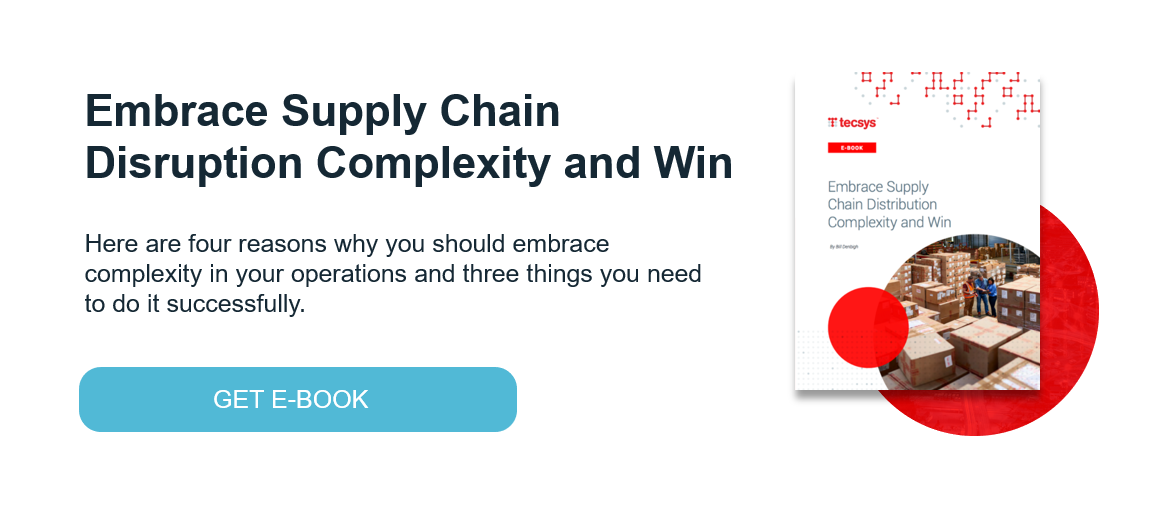Understanding New Trends in Distribution Management

The primary difference between a trend and a fad is that trends have the potential to forever influence how we think and act, while fads are, well, here today and gone tomorrow. Think about new trends in distribution management brought on by innovative technologies over the last decade. Is your business keeping up with these game-changing trends?
The diffusion of innovations theory (Rogers 1971) describes the pattern and speed at which new ideas or products spread through a population. The main players in the theory are innovators, early adopters, early majority, late majority and laggards. They are described as follows:
- Innovators do not fear change and are willing to accept the occasional setback.
- More discrete in adoption choice, early adopters take more time to research the risk/reward ratio of innovative ideas and technologies.
- The early majority reaps the rewards with much less risk exposure. They look to the early adopters for inspiration.
- The late majority are skeptical of innovative technologies and tend to lose out on the opportunity to gain a superior position.
- Laggards tend to focus on tradition. Averse to change, they eventually must make the leap but will have lost an edge over their competition.
Let’s break down some of these innovative technologies and evolving, new trends in distribution management that are transforming the industry.
Connectivity
The connectivity afforded by the internet has streamlined data flow all along the supply chain. The efficiencies gained by integrating with trading partners are well documented. Beyond exchanging business transactions, trading partners are sharing business intelligence to reduce inventories and lead times.
The internet enables ‘anywhere, anytime’ for a wide range of actions. Distributors are trending toward 100% visibility across the supply chain, not just to track physical assets but also to improve inventory management, including demand planning, product pricing and customer service.
Layered Software Architecture
Some internet core technologies (HTML, CSS, JavaScript) provide the means to generate leaps in performance and capabilities when applied to information technology. These technologies have transformed software architecture.
Modern software architecture is layered. Typically, there are three layers: presentation of data, business logic and database. The layers function independently. Changes to screen layouts need not affect business logic and vice versa. In fact, the trend is to allow for screen customizations without involving a programmer. The data layer allows the business logic to interact with different databases. As a result, software providers can develop business logic that can connect to a customer’s preferred database.
Customizing the Smart Way
Customizations permit a business to retain its uniqueness. The new trend in distribution management is not to stop customizing but to partner with a software provider that has the tools and know-how to extend the capabilities of the application in a way that does not impede future upgrades. Customizations are developed as extensions to the application rather than modifying the source code.

Software-as-a-Service (SaaS)
Software providers are offering hosting services thereby relieving their customers from worrying about maintaining expensive servers, ensuring scalability and also ensuring business continuity in case of failure. Furthermore, businesses can benefit from frequent updates. Depending on the complexity of the application, three trends are emerging for delivering product updates.
- Early and often – The software provider announces new features and bug fixes as often as possible. It can take any time between several minutes and a week or two.
- On a set schedule – Here, a predictable schedule is provided with something along the lines of every two weeks or every month to announce a “sprint” of product updates.
- A combination – An example of this strategy is where you have small monthly maintenance releases between bigger semi-annual feature releases.
Tightly Integrated Internal Processes
Effective distribution management requires the establishment of seamless cross-functional processes. Ideally, key front and back office processes are operating on a single platform. When this is not possible, it may be necessary to integrate applications developed with various technologies. This exercise can be very complex and expensive.
The complexity resides largely with data uploads. The trend is for software providers to provide well-documented access points. Ideally, the data is uploaded, transformed and saved into staging files where it can be validated prior to affecting live data.
Specialized applications, such as Iguana, allow developers to create and test interfaces between varied business applications regardless of data type or transfer protocol.
Data-driven Decisions
Being data driven while continuously improving distribution management processes is key to supporting your growth strategies. Businesses with full access to complete and accurate data gain valuable insights. The ability to view business data in any format with just a few clicks is attainable with the right tools.
In distribution management, monitoring a selection of financial and supply chain metrics provides a broader view. Documenting the processes that impact a metric are essential to uncovering vulnerabilities. Data-driven organizations tend to make small incremental changes and closely monitor the impact.
Trends have a lifecycle. Some are more impactful than others. A megatrend refers to events that can be considered a major movement or pattern emerging in the macroenvironment. Here’s an excerpt from Deloitte on today’s megatrends affecting the supply chain, “Technology is finally living up to its 10-year promise. It took a while – predictions 10 years ago did not seem to materialise at first – but current technology is able to support agile and resilient supply chain processes. Many technologies, from AI, machine learning and IoT to cloud computing and data availability, are maturing and offer more capabilities at lower cost than before.”
Adopting new trends in distribution management can offer a plethora of opportunities. Not every business can afford to be first, but what business can afford to be last?



